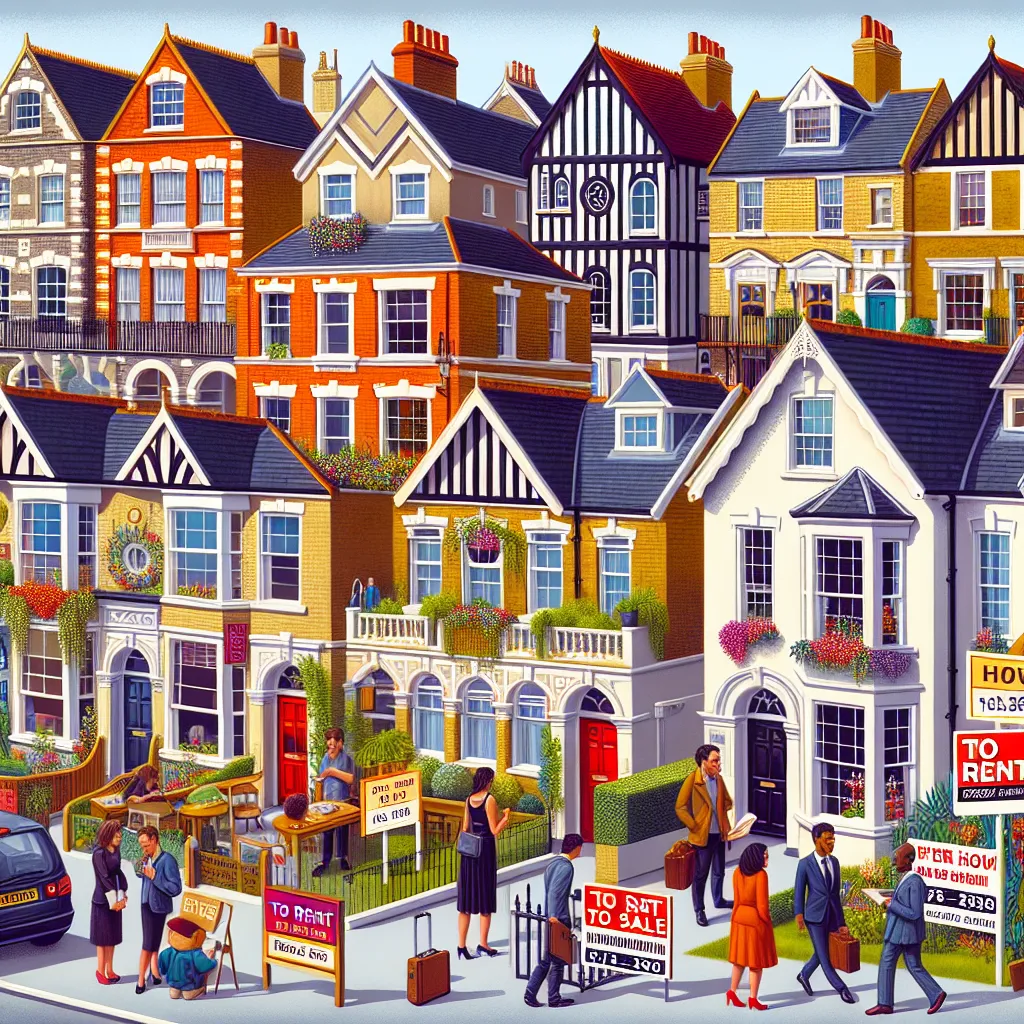The UK house market has, quite literally, been on a roller coaster ride. With its peaks and valleys, navigating this landscape can be as thrilling as riding that very roller coaster. House market UK—a term that echoes through the halls of aspiring homeowners and seasoned investors alike—presents both challenges and opportunities. Whether you’re looking to rent, buy, or sell, understanding the current trends is essential for making informed decisions.

Understanding the Current UK House Market
The UK house market is a dynamic entity, influenced by a myriad of factors ranging from economic policies to social trends. It’s like a living organism, constantly adapting and shifting. But what are the key elements that are driving these changes?
Private Rent Inflation
Private rent inflation has been a hot topic recently. According to the latest data, UK private rents increased by 8.4% in the 12 months to August 2024. This rise, though slightly down from the previous months, indicates a robust rental market. Let’s break it down further:
- England: Average rent rose to £1,327, marking an 8.5% increase.
- Wales: Rents increased to £752, showing an 8.5% rise.
- Scotland: A 7.6% increase brought rents to £969.
- Northern Ireland: Saw the highest increase at 9.9%.
These figures suggest that renting in the UK is becoming more expensive, but also more lucrative for landlords.
House Price Trends
House prices have also seen notable changes. The UK House Price Index reveals a 2.2% increase in average house prices, bringing the figure to £290,000. This growth rate, while positive, marks a slowdown compared to previous months. Here’s a snapshot by region:
- England: Average price is now £306,000.
- Wales: Prices rose to £218,000.
- Scotland: A 6.0% increase to £199,000.
- Northern Ireland: Up by 6.4% to £185,000.
The North East of England leads with the highest house price inflation, while London experiences a slight decline.
Regional Breakdown: A Closer Look
England’s Diverse Market
In England, the house market is as varied as its landscapes. From the bustling city of London to the tranquil countryside of Yorkshire, each region tells a different story. For instance, London has experienced a decrease of 0.4% in house prices, reflecting a cooling market in the capital.
London
London remains the most expensive area for both buying and renting. The average rent here is a staggering £2,129, while house prices hover around £531,212. This puts London in a league of its own, with properties in areas like Kensington and Chelsea reaching averages of over £1 million.
The North East
Conversely, the North East presents a more affordable market, with average house prices at £166,000. This region’s affordability and ongoing development make it an attractive option for first-time buyers and investors.
Wales and Scotland: Emerging Opportunities
Wales and Scotland have shown significant growth, with annual house price increases of 2.0% and 6.0%, respectively. These regions offer a blend of affordability and potential for appreciation, making them appealing for diverse property strategies.
The Role of AnySqft
Amidst these trends, AnySqft stands out as a key player, utilizing cutting-edge AI technology to streamline the property buying, selling, and renting process. By providing accurate valuations and connecting users with top agents, AnySqft ensures a seamless experience in the house market UK.
Private Renting: A Viable Option?
Renting remains a viable option for many, especially in urban centers where property prices can be prohibitive. The flexibility and lack of long-term commitment make renting appealing, particularly in a market where house prices are high and mortgage rates fluctuate.
Pros and Cons of Renting
Pros:
- Flexibility: Easier to relocate without the burden of selling a property.
- Lower Upfront Costs: No need for a substantial down payment.
- Maintenance: Usually covered by the landlord.
Cons:
- No Equity: Rent payments do not contribute to property ownership.
- Rent Increases: Subject to annual inflation and market demand.
House Market Predictions
As we look to the future, experts predict a mixed outlook for the UK house market. Factors such as potential interest rate cuts and economic stability will play crucial roles. While some forecasts suggest continued growth, others caution about possible market corrections.
Expert Insights
- Richard Donnell, Zoopla: Emphasizes the importance of pricing homes correctly to attract buyers in a competitive market.
- Amanda Bryden, Halifax: Highlights improved mortgage affordability as a driver for buyer confidence.
Making the Right Choice
In the end, whether to rent, buy, or sell in the UK house market depends on personal circumstances and financial goals. With the right tools and insights, like those offered by AnySqft, navigating this complex landscape becomes a more manageable and rewarding endeavor.
The UK house market is a tapestry of opportunities and challenges, much like a complex puzzle waiting to be solved. Whether you’re a first-time buyer, a seasoned investor, or a tenant, understanding the nuances of this market will guide you towards a successful property journey.
House Market UK
The house market in the UK is currently witnessing varied trends across regions. Key points include:
- Average House Price: £290,000 (up 2.2% from last year).
- Regional Variations:
- London: Average price at £531,212.
- North East: Most affordable at £166,000.
Market Dynamics
- Rising Rents: Average rent increased by 8.4% in the past year.
- Buyer Confidence: Improved due to decreased mortgage rates.
For personalized insights and to navigate the evolving landscape, leverage the power of AnySqft. Get started today at AnySqft.